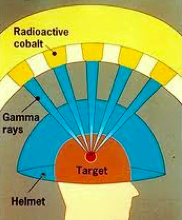It’s not exactly new information that ionizing radiation is dangerous, so I was a bit shocked four years ago when I learned just how cavalier large segments of the medical community have been in exposing children to larger-than-needed doses of radiation. I wasn’t surprised at all that the number of CT scans done on kids was high –after all the scans provide a lot of information, are easy for explaining things to patients, and the financial incentives are there. But I was angry when I found out that kids are often scanned using adult settings.
It’s not exactly new information that ionizing radiation is dangerous, so I was a bit shocked four years ago when I learned just how cavalier large segments of the medical community have been in exposing children to larger-than-needed doses of radiation. I wasn’t surprised at all that the number of CT scans done on kids was high –after all the scans provide a lot of information, are easy for explaining things to patients, and the financial incentives are there. But I was angry when I found out that kids are often scanned using adult settings. (There is a huge range in how this issue is addressed. I’ve been very impressed with how physicians at Children’s Hospital in Boston carefully weigh the pluses and minuses before ordering a CT.)
I first described the Image Gently campaign in early 2008, and am happy to see that it has continued to make progress. Now the FDA is moving forward with a plan to require manufacturers to take pediatric safety into account with new devices. As AuntMinnie reports, FDA proposes to require the following:
- Specific preset pediatric control settings that are appropriate for the intended patient
- Pediatric procedures, labeling, and protocols that are designed to minimize radiation exposure while providing image quality of acceptable clinical value
- Display and recording of patient dose or dose index and ability to record other patient information, e.g., age, height, and weight (either manual entry or automatic calculation)
- Software interface features that alert the end user to important pediatric use issues (e.g., interactive software pop-ups that remind users of special pediatric issues when setting up the image acquisition)
Makers that don’t meet the requirements will have a warning label attached indicating that the equipment shouldn’t be used with children.
Interestingly, the device industry and radiologists seem to be pleased with FDA stepping up its oversight of how approved equipment is used. They’re worried –and rightly so– that patients and families will push back against the use of scans as awareness of radiation dangers rises.
In an era of hostility toward government intervention (and I’m willing to bet Republicans are well-represented in the ranks of radiology) it’s interesting to see the embrace.






